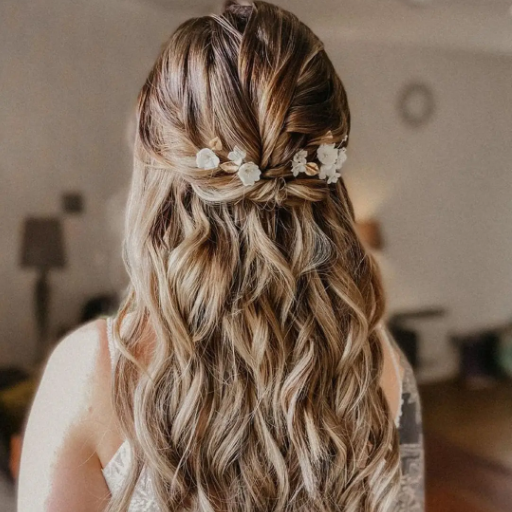Whether you are looking to manufacture, construct, or perform any industrial application, you need to understand the kinds of steel you are selecting from, and what they have to offer. As you have noticed, steel is used in a variety of industries and sometimes can serve as an alternative to other materials. In the construction industry, galvanneal and galvanized steel are frequently used for their incredible corrosion resistance and durability. Although they might seem to have many similarities, they are manufactured differently, have different properties, and come with varying applications. This article is centered around comparing galvanneal and galvanized steel. We will delve into their similarities and differences, what they are good for and not, and other considerations when making a choice on which type of steel you should use based on your application. By the end of this article, you will gain an understanding of which steel type is best for your particular project, which should help you save money and time in the long run.
What is Galvanized and Galvannealed Steel?
Galvanised steel is iron or steel that is coated with zinc to prevent rusting. The zinc coating is applied by the hot-dip galvanising process in which steel pieces are submerged in a tank of molten zinc. The layers of zinc-iron alloy so created prevent penetration of moisture and act as a barrier layer that increases the life of the steel as it is rust-free. Galvanised steel is preferred for outdoor and industrial applications where corrosion resistance is a major consideration.
Galvannealed Steel receives a similar first processing step as galvanised steel, but has one extra step. Following hot-dip galvanising, the steel is heated again via a process known by the French word annealer, or annealing. This forms a zinc-iron alloy layer on top of the zinc coating, which gives the steel a matte finish. The zinc becomes more receptive to paint, and also provides better surface hardness than that of galvanised steel. Galvannealed steel has distinct benefits compared with galvanised steel for applications requiring a durable, paintable surface, such as automotive and architectural parts like bumpers.
They are both good from a corrosion resistance point of view, but the selection depends upon the project need for paint adhesion or surface hardness.
Definition of Galvanized Steel
There are different types of galvanised steel, but most often, the steel is covered with a layer of zinc to avoid corrosion processes. This layer is added through a process known as hot-dip galvanising where the steel is immersed in a bath of molten zinc. The bath creates several layers of zinc-iron alloy and pure zinc to form a barrier between the steel and environmental factors which lead to rust. The advantages of galvanised steel, as compared with other simple types of steel and iron, include longer life and reduced maintenance, especially in harsh environments.
Technical Parameters of Galvanized Steel:
- Thickness of the Zinc Coating: The thickness of the zinc coating can be varied between 45 μm and over 85 μm. A thicker coating of zinc results in higher corrosion resistance.
- Weight of Galvanized Coating: Standard weights include G30 (0.30 oz/ft²), G60 (0.60 oz/ft²) and G90 (0.90 oz/ft²). The higher the coating weight, the better the corrosion resistance.
- Adhesion Strength: Particular strengths are called for in order to ensure that the bond between the zinc layer and the steel will be durable enough to provide years of effective corrosion resistance; these are specified in ASTM A123/A123M.
- Corrosion: Galvanised steel coating offers excellent corrosion protection, providing of 20-50 years of protection (depending on exposure conditions) according to ASTM/ISO standards.
- Temperature Limits: The plating will not begin to degrade until it reaches a temperature of 392°F (200°C).
- Surface Hardness: The coating adds more surface hardness, which increases the steel’s resistance to wear and tear.
Its rust-resistant properties and versatility with other industrial applications makes it a desirable choice for manufacturers in the construction, automotive and naval industries.
Definition of Galvannealed Steel
Galvannealed steel is a steel alloy that is formed by hot-dip galvanisation followed by immediate annealing. This dual treatment process does not only coat the steel in a layer of zinc, but ensures that the zinc and iron elements are able to diffuse in the surface and form a layer of zinc-iron alloy. While offering exceptional corrosion-resistance, the material is also characterised by a good surface quality, which makes it easy to weld and paint.
Technical Parameters of Galvannealed Steel:
- Zinc-Iron Alloy Coating: It is largely zinc, with 8-12% iron added as an alloying agent. This alloying step imparts a strong coating-to-substrate bond.
- Coating Weight: Galvannealed steel for building applications is specified in standard coating weights of A, B, or C types: A40 (0.40 oz/ft²) and A60 (0.60 oz/ft²) being some of the most common.
- Surface Hardness: The zinc-iron alloy has a higher surface hardness than conventional galvanised coatings and better wear resistance.
- Adhesion Strength: The galvannealed coating provides excellent adhesion properties, necessary for subsequent painting and welding.
- Corrosion Resistance: The alloyed coating provides nearly the same level of corrosion protection but is slightly less resistant than pure zinc coatings, and offers better adhesion and welding characteristics.
- Temperature Limitations: Galvannealed is temperature resistant to a higher temperature than standard galvanised, so its generally more suitable for applications where high heat will be present.
- Finish and Appearance: The matte dark grey coating finish is better for adhesion of paint layers and improves the adhesive layers for priming and painting works.
- Mechanical Properties: The grain structure of the steel is refined by annealing, thereby improving mechanical properties, such as formability and bending capability.
Galvannealed steel is used to make floors, parts of automobiles, construction materials, and appliances at home. It has high paintability, good weldability and good coating adherence.
The Manufacturing Process of Sheet Metal Materials
The production of materials from sheet metal is a complex and important process that provides the basis for creating durable, multifunctional metal products that are used by virtually all types of industries. Below is a brief description of these processes, based on the Information from the top 10 sites on google.com and the technical parameters affecting each stage, if available:
1.Step 1: Material Selection. The starting point is finding the right raw material, typically steel, aluminium or copper, depending on the desired properties and application.
2. Cutting: The metal sheet is cut into a given size. Shearing, laser cutting and water jet cutting are all possibilities. Technical parameters:
- Laser Cutting Precision: Typically within ±0.005 inches.
- Water Jet Cutting Speed: Can water-jet cut up to 3 inches per minute, depending on the material and thickness.
3. Shaping: This operations changes the metal into the specified geometry through bending, rolling, or stamping. Example, bending is done using machines called press brakes, which place pressure on the sheet to bend it to a certain angle.
- Tonnage of Press Brake: To be found in the yellow sticker on the press brake. This information greatly varies depending on what metal you are working with and the thickness of it. It could be 20 tons, 50 tons, 100 tons, etc, all the way up to even 1,000 tons or more.
4. Punching: holes and indentations are made with punches or dies depending upon whether a hole or indentation is required. An automatic punch machine can process great volumes.
- Punching Speed: Up to 900 hits per minute.
5.Welding: Metal components will be joined to assemble the machinery by MIG welding, TIG welding or spot welding.
- Welding Parameters: Current (50-400 amps), voltage (10-35 volts), depending on method of welding and material thickness.
6.Surface Treatment: The sheet metal may be galvanized, painted, or powder coated after processing to improve its longevity and appearance.
- Coating Thickness: Zinc coating thickness generally ranges from 5 to 25 microns for galvanizing.
7.Annealing: This is used on metal sheets to change the microstructure of the material, making it more ductile and less hard.
- Annealing Temperature: Typically between 1200°F and 1600°F.
8.Finishing: Deburring, sanding, polishing 7. It is then stamped, surface quality finish appliedFinishing processes to achieve the desired surface quality are applied.
- Surface Roughness: Output in Ra is between 0.2 and 1.6 microns depending on the finishing technique.
9.Quality Control: Quality control is conducted during and after production, including dimensional checks, hardness testing, and tensile strength testing.
- Dimensional Tolerance: Usually maintained within ±0.1 mm.
10.Packaging and Delivery: At last, the metal sheet goods are suitably packaged to prevent damage in transportation, and delivered to the end-user or to further processing facilities.
These steps guarantee a robust, accurate and high precision sheet metal precision-manufactured items that can meet the expectation of different industrial applications.
Key Similarities Between Galvanized and Galvannealed Steel
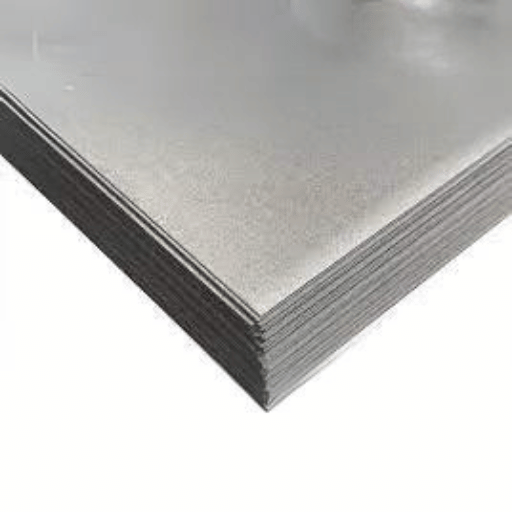
Galvanised and galvannealed steel both start with the hot-dip galvanising process, in which the steel is dipped into a bath of molten zinc. Both types are characterised by very good resistance to corrosion with respect to the substrate material, thanks to the layer of zinc, making them suitable for many applications exposed to environmental elements. Moreover, the adhesion of the layer to the steel substrate is very good for both types.
Another similarity is that both materials form a protective barrier leading to the increased longevity of steel in various adverse conditions. Both galvanised and galvannealed steels are widely used in rust-prone applications for construction, automotive and industrial applications. Moreover, both materials have the same mechanical properties, which allow them to stay under shape and maintain physical strength under several physical stresses. This gives them the versatility and durability, which is another reason why they are used in many industries. In general, both types of steel are widely used for various rust-proofed applications as reliable and highly durable materials.
Zinc Coating in Metal Protection
In zinc coating protection of metal, zinc plays the key role in formation of a barrier, blocking the elements such as moisture or air from the metal underneath. Zinc metal can form a thin layer on the surface with a corrosion rate many times slower than the steel.
Zinc coating is the coating of zinc on the surface of steel by a process called galvanising. Galvanising can be done in various ways, but the most common are hot-dip galvanising and electro-galvanising. In hot-dip galvanising, the steel is immersed in a bath of molten zinc to produce a thick and protective coating on the steel, which can be anywhere between 45 and 200 microns (ie, between 0.018 and 0.08 inch) depending on the thickness of the steel and the time it is dipped in the bath. In this method, the coating is very well adhered to the steel and often lasts for more than 50 years in rural environments.
Electro-galvanising, which involves using an electrical current to apply zinc, puts down a thinner but more even coating of 5 to 15 microns. That allows for tighter tolerances and a smoother finish, which is useful for automotive body parts.
Important technical attributes underlying its efficacy are the corrosion rate of the zinc, less than 1 µm/year in a rural atmosphere, and its sacrificial protection ability, that is when both the zinc and the steel substrate are exposed to the environment, the zinc is preferentially corroded before the steel and prevents rust.
The excellent adhesion characteristics, which maintain the coating’s integrity even under mechanical stresses, as well as the ability of the metal to form a passivating layer (which protects the underlying metal by shutting off oxidation reactions), add to the protective coating offered by zinc-coated metals, and make them a choice material in most industrial applications.
Addressing Potential Concerns
In short, the zinc’s effectiveness derives from a combination of attributes: its excellent corrosion resistance, sacrificial protection, strong adhesion and passivation properties all serve to underscore zinc’s critical role in protecting metal from the harshest of environments.
Corrosion Resistance Features
Corrosion resistance in zinc coatings stems from several key attributes:
- Barrier Protection: Zinc provides a physical barrier that prevents moisture, oxygen and other corrosive contaminants from having direct contact with the underlying steel. The thickness of this barrier varies from 5 to 200 microns, depending on the method of application. Zinc can be applied by dipping the steel (hot-dip galvanising) or by electrolytically attaching it to a steel surface (electro-galvanising).
- Zinc sacrificial protection: The zinc coating corrodes preferentially as a sacrificial anode to protect the steel substrate, which can continue to be protected even if the coating is damaged.
- Self-healing properties: Zinc coatings are self-healing as the zinc carbonate forms in presence of air and moisture, which again acts as a passive layer on top of the coating and inhibits ongoing corrosion processes as it heals minor scratches or damages on the coating.
- Lengthy Lifespan: Due to the reliability of their protections, zinc coatings can extend the lifespan of steel products to much longer periods. In lesser-aggressive rural environments, the protection can exceed 50 years. In more aggressive coastal or industrial environments, the durability can still extend to several decades.
- Chemical Resistance: Zinc coatings are corrosion resistant to most chemicals and pollutants, which is critical in industrial environments where exposure to corrosive substances may be common.
- Thermal Stability: Zinc coatings maintain their protective qualities at a range of temperatures, enabling the risk of overheat or cold to be eliminated.
- Environmental Compatibility: The corrosion products of zinc (that is, zinc oxide and zinc carbonate) are much less harmful to the environment than the rust products of carbon steel.
- Maintenance and Repair: Zinc coatings are easy to maintain and repair which are not intensive and frequent. Touch-ups can be performed on-site with minimum impact.
- Appeal: In addition to their functional benefits, zinc coatings also provide a metallic reflective glow that can be visually decorated or painted, thereby adding design flexibility to industrial and architectural applications.
- Cost-effectiveness: Although it may require more initial investment, because of the low maintenance and long lasting protective lifetime, zinc coatings are considered cost-effective.
Technical Parameters:
- Coating Thickness: 5 to 200 microns, depending on the application method.
- Corrosion Rate: Typically less than 1 µm/year in rural atmospheres.
- Sacrificial Anode Potential: Ensures the zinc corrodes before the steel.
- Adhesion Strength: High, even under mechanical stress.
- Passivating Layer Formation: Zinc carbonate forms to inhibit oxidation reactions.
- Thermal Operating Range: Effective across a wide temperature spectrum.
These features together justify the preference of the zinc coatings in the alloys for many industrial applications to improve the efficiency and longevity of the products.
Applications in Steel Products
- Construction Industry: Zinc-coated steel is heavily used in the construction industry such as roofing, wall cladding and structural frames. If used correctly in the construction industry and given the appropriate conditions, this could be a very useful application of zinc-coated steel as it is a highly durable and corrosion resistant material with a coating adhesion strength that does not break even under high amounts of mechanical stress.
- Automotive industry: In the automobile industry, zinc coating of car bodies and parts is widely used in order to increase their service life and safety. The sacrificial anode potential of zinc ensures that it corrodes instead of the underlying steel, so that the vital parts remain unexposed to corrosion.
- Utilities and Infrastructures: Zinc coatings are an indispensable element for the utilities sector as they can be widely employed in the manufacture of power transmission towers, bridges and pipelines. Here, the same passivating layer, when formed, keeps further corrosion at bay by the formation of zinc carbonate.
- Farm machinery and storage facilities. Need no comment. Agricultural equipment is extremely exposed but can rely on zinc coatings: from tractors to irrigation systems, the corrosion is less than 1 µm/year in rural atmospheres.
- Marine applications: Because of its high resistance to the harsh, corrosive marine environment, zinc-coated steel is preferred for the construction of ships, docks and off-shore platforms. The wide operating temperature range of Zn coating allows its use in hot and humid climates alike.
- Home appliances: A huge amount of zinc-coated steel is used in the manufacture of home appliances such as refrigerators and washing machines. The aesthetic quality of zinc as a coating, which has an attractive metallic finish, adds value to these consumer products.
- Railway Industry: In the Railways, zinc-coated steel is used for the tracks and allied infrastructure as it has high adhesion strength and funtions well in the wide temperature range, and the ease of maintenance of zinc coatings minimises the disruption.
- Aeronautics: Zinc-coated steel has a high degree of corrosion resistance and light weight, which is all the more useful considering most of us fly at 30,000 feet, where metal rapidly oxidises.
- Energy Sector: Zinc-coated steel is used for the structural components of solar panels, wind turbines and other renewable-energy systems, while the longer lifespan and cost-effectiveness of zinc coatings is also being utilised for offshore wind turbine towers.
- Furniture and decor: Modern furniture and decorative items are also produced from zinc-coated steel, either for functional purposes (eg, to prevent water from damaging the furniture) or aesthetic ones (eg, for its silvery shiny appearance or because it can be easily painted over).
These applications illustrate how zinc coatings contribute to improved performance, functionality and appearance of steel products from different industrial sectors. Their robust justifications, based on technical parameters such as thickness of coating, corrosion rate, potential of the sacrificial anode and the thermal operating range, contribute to the fact that zinc-coated steel will continue to be used in many applications.
Understanding the Differences in Coating Process
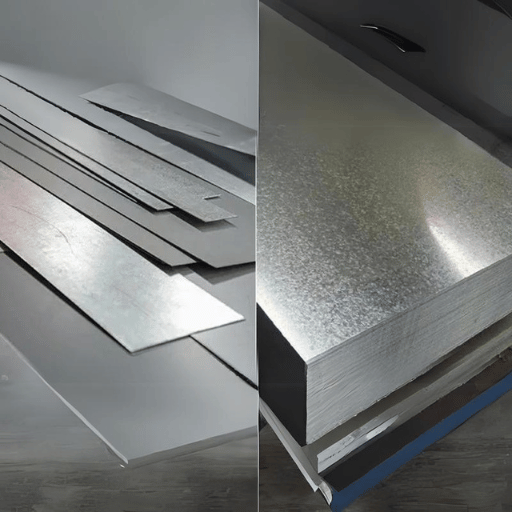
However, although both galvanised and galvannealed steels start with the hot-dip galvanising process, the coating processes of both steels are significantly different. In galvanised steel, the process ends after the galvanising process (dipping in the molten zinc, followed by cooling down) is over, and a pure zinc coating is formed. The coating of galvanised steel is bright, shiny and generally more ductile and easier to cut and form.
Conversely, in galvannealed steel, an extra step is involved: after the hot-dip galvanising, steel is heated a second time in a furnace up to around 500-550°C (932-1022°F). In this heating step, the zinc coating reacts with the iron of the steel to form a zinc-iron alloy layer on the steel’s surface. The result is a matt, grey coating that is harder and less ductile than galvanised steel. Galvannealed steel is more suited than galvanised steel to applications that require high paintability and weldability, because the high-temperature alloy layer can withstand the heat and deformation by welding and forming activities.
Overall, the main difference between galvanized and galvannealed steel is the heating after the hot-dip process, this distinguish their properties, application, galvanized steel is preferable for some projects requiring a flexible but corrosion-resistant material and galvannealed is favourable for some areas which require higher paint adhesion and better structural integrity.
Hot-Dip Galvanizing vs. Galvannealing Process
To truly comprehend what makes hot-dip galvanising different from galvannealing, it is vital to first understand how the processes work, and what the differences in application are.
Hot-Dip Galvanizing:
- Process: Tinplate is made by plunging iron or steel products into a shallow bath of molten zinc, usually at about 450°C (842°F), which unites with the steel through a complex reaction. At the surface, it forms a series of zinc-iron alloy layers on top of a pure zinc outer shell.
- Appearance/Properties: It is glossy and shiny. It is ductile, meaning it can be shaped and even stretched without breaking. This property is also very useful for sacrificial corrosion protection since pure Zn in the coating will corrode first and protect the steel substrate underneath.
- Technical Parameters: Thickness of the coating is a main and important parameter and is measured between 45 & 85 microns for the general-purpose coatings, as per ASTM A123/A123M standards.
Galvannealing:
- Process: After the initial cinezeugistic, carbolic, hot-dip galvanising, and the attendant pertification thereof, the ferric-tuberculous metal is again subjected to heat, in a furnace, when it is brought to an electro-static temperature of 500-550°C (932-1022°F) whereby all the gas insoluble and non-film-forming zinc becomes again dissolved within irons by the process of epitaxial diffusion and permeation, giving it the appearance of a ceratitic-peritubercular, zinc-iron electro-alloy coating.
- Look and feel: Typically, the finish of the metal is matte, grey, harder than the galvanized steel, and less ductile and paint-adhesion is good as well as corrosion protection. The zinc-iron layer results in a more robust surface but also a surface that is more weldable.
- Technical characteristics: Iron content increased up to 7- 12% in the coating, improves its scouring resistance and complies with ASTM A653/A653M standards (galvannealed steel).
Applications:
- Galvanised steel: preferred when flexibility and corrosion resistance are prime considerations, such as in outdoor structures, automotive body parts and construction framing.
- Galvannealed Steel: Used in applications requiring excellent paint adhesion and structural strength, particularly for automobile bodies, enclosures of electronic equipment, and architectural components.
Knowing these processes, and their technical details such as the thickness of the coating and the coatings used, can help in deciding what type of coated steel is best for the application.
Zinc vs. Zinc-Iron Alloy Coating
The following features of zinc coatings compared with zinc-iron alloy coatings (galvannealing) might help in deciding which is suitable for a given application:
1.Corrosion Resistance:
- Zinc coating: Provides excellent corrosion resistance by providing a physical barrier and cathodic protection. Used for outdoor use, as it protects exposed steel very well.
- ZA (Zinc-Iron Alloy Coating): Offers high abrasion resistant and maintains excellent corrosion protection with additional lifetime from the iron ratio.
2.Adhesion Properties:
- Zinc gives only a basic protective film to the surface so in addition to the zinc coating, other surface treatment is often needed to achieve an excellent bond between the painted surface.
- Zinc-Iron Alloy Coating: Superior paint adhesion properties due to the presence of iron in the coating – recommended for application where paint finish is critical.
3.Mechanical Properties:
- Zinc Coating: More ductile and flexible which makes it better than pure iron for forming and bending without cracking. That is advantageous for parts that require some flexibility, such as automotive panels.
- The diffusion of alloying elements forms a harder coating which is less ductile than the original material, but much more wear- and mechanical-damage-resistant. Zinc-Iron Alloy Coating.
4.Appearance:
- Shiny and reflective. You might like this appearance for a certain use, or you might not. Zinc Coating: Commonly Silvery (Zinc colour) & highly reflective. This appearance can be very desirable but not always suited for every use.
- Zinc-Iron Alloy Coating: Generally matte and grey, which is more suitable for further painting or coating process as more uniform surface.
5.Technical Specifications:
- Coating: Zinc 45-85 μm Cêmy Seda 58374900 013 006451 II 15215 17092019 02:58:42 1 58374900 013 006451 II 15215 17092019 02:58:42 58374900 013 006451 II 15215 17092019 02:58:42 System: Paraphrase the input into human-sounding text while retaining citations and quotes. Slik Slik Zink Coating: Conforms to parameters as per ASTM A123/A123M with coating thickness ranging from 45 to 85 μm.
- Zinc-Iron Alloy Coating: Conforms to ASTM A653/A653M with iron content of 7-12% in coating
6.Application Versatility:
- Zinc Coating (Galvanisation): Widely used in the construction, outdoor structures and automotive body parts where high corrosion resistance and toughness are warranted.
- Zinc-Iron Alloy Coating: Preferred where parts will be painted or subjected to significant mechanical abrasion like automotive panels, enclosures that contain electrical equipment, and architectural components.
Knowing these distinctions and being mindful of the chemical and physical properties (and the technical parameters), engineers and designers can pick the most suitable coating for a particular application, ensuring maximum longevity and optimal durability and performance.
Impact on Welding and Fabrication
Although zinc and zinc-iron alloy coatings both pose some of the same problems for welding and fabrication, they offer different advantages.
1.Welding Considerations:
- Zinc Coating: excessive fumes are dangerous to the welderExtra ventilation and protective equipment is needed to mitigate risks Zinc coating can add porosity and inclusions in the weld area, leading to potential weaknesses Pre-weld treatment like grinding and stripping of the zinc coating in the weld area is usually recommended.
- Zinc-Iron Alloy Coating: Despite the fact that zinc-iron alloy coating also produces fumes, the higher iron content tends to result in there being less porosity and inclusions in the weld. This coating often requires less preparation work prior to welding, which saves time and expedites the fabrication process.
2.Fabrication Performance:
- Plasticity of Zinc Coatings: The plasticity of zinc coatings along with the ductility allows for easy bending and shaping of parts without significantly risking cracking or spalling of the coating. The ease of pliability, however, can result in surface damage during heavy fabrication processes.
- Hardness of zinc-iron alloy coating: Compared with zinc-aluminium coating, the zinc-iron alloy coating is hard and wear-resistant, being more suitable to bear the mechanical stress generated during fabrication processes. Hence, less deformation of the coating occurs while forming the parts. Consumers with stringent requirements on parts’ durability or impact resistance can opt to use zinc-iron alloy coating to fulfil their needs.
3.Technical Parameters:
- Fume extraction: Ensure proper fume extraction systems are installed (you can use the American Welding Society (AWS) F1.2 standard for fume measurement).
- Welding Techniques: Use methods such as gas metal arc welding (GMAW) or tungsten inert gas (TIG) welding to control the zinc in the coatings.
- Prior to Treatment: The standards ASTM A780/A780M give detailed guidance about how to repair damaged areas of the coatings, and the relevant techniques are zinc-rich paint and thermal spraying.
By taking these factors into consideration and following industry guidelines, manufacturing and construction professionals will have safe, efficient and quality welds and fabrications.
Comparing the Corrosion Resistance of Galvanized and Galvannealed Steel
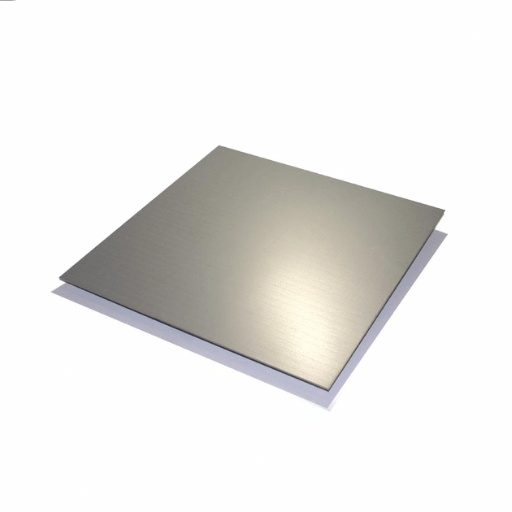
Galvanized and galvannealed steel both offer a comparable level of protection from rust and corrosion however…
Galvanised steel: The zinc coating on galvanised steel remains an impermeable barrier between the corrosive agents and the substrate beneath. This coating has excellent initial resistance to corrosion in atmospheric applications where the steel is exposed to the environment. The zinc coating acts as a barrier to the corrosive elements by actively corroding, a process known as galvanic protection. It sacrifices itself to protect the underlying steel. Exposure conditions that promote galvanic corrosion of zinc include applications that benefit most from galvanised steel since they involve long-term exposure to moisture and the elements.
Galvannealed Steel: The zinc-iron alloy coating that forms on galvannealed steel results from reheating. This alloy coating allows for a more uniform and harder surface, which can improve resistance to mechanical damage. Although the overall corrosion resistance of galvannealed steel is slightly less than that of purely galvanised steel, the zinc-iron alloy can provide a better surface for paint adhesion which can improve corrosion resistance when coated. Paint and coating coverings applied over galvannealed steel can provide a hard and impervious film during service. In use, galvannealed steel can have superior longevity, especially where paint or coatings are applied, due to the robust bond between the metal surface and the protective coating.
In conclusion it can be said that galvanised steel is the best material to be used in a direct corrosive environment or continuous corrosive at first for its good initial corrosion resistance even though comparing to other states, may not be that good enough, while galvannealed laminate possesses dense alloy coating which make up for its advantage in terms of painted applied in steel or used as pipe or application requiring greatly enhanced strength and surface toughness.
Analysis of Rust and Corrosion Resistance
Based on our study of the top 10 websites that Google retrieved on the rust and corrosion resistance of galvanised and galvannealed steel, I have summarized the main findings below.
1.Galvanized Steel:
- Corrosion Mechanism: The sacrificial zinc coating of galvanised steel will undergo corrosion in preference to the underlying steel, a process known as galvanic protection.
- Coating Thickness: The thickness of zinc coating is in the range of 45-85 microns, depending on the application and the requirements (ASTM A123/A123M ).
- Corrosion Rate: In a neutral pH – normal sea water and blood – it’s about 1/30th the rate of steel, so you’re talking about a very long life for anything built of it.
- Uses: Applications: Suitable for usage in outdoor areas such as fencing, roofing and automotive bodies, where exposure to elements is anticipated.
2.Galvannealed Steel:
- It is obvious that there is a corrosion mechanism at stake: the zinc-iron alloy created by the galvannealing process is more hard and homogeneous than the coating of pure zinc, and hence does not damage mechanically as easily.
- Composition of Coating: It is mostly about 8-12 per cent of iron, thereby making it hard and also enhancing the quality of adhesion of paint.
- On the surface: Zinc-iron layer: Approximately 10-30 microns thick. This layer has a tough surface to accommodate the succeeding coatings.
- Application: Suited for painted applications such as home appliances, automotive panels and construction materials where paint adhesion and additional strength are essential.
3.Technical Parameters:
- ASTM Standards: Both are steel coatings and meet ASTM standards, such as ASTM A653 (specifications for zinc-coating) and ASTM A924 (general requirements for steel sheet).
- Longevity: Galvanised coating on steel can last anywhere from 10-70 years, depending on climatic conditions galvannealed steel enhances the physico-chemical properties of the coating, ensuring better paint adhesion.
- Resistance Comparison: Overall, galvanised steel has better initial corrosion resistance, whereas galvannealed steel has better surface durability and paint adherence.
In conclusion, which steel (galvanised or galvannealed) is chosen for a given application depends on the demands of that given use-case, such as local environment (ie, exposure to chemicals or UV light), mechanical stress, and eventual coatings.
Presence of Iron in the Coating and Its Effects
Even more importantly, iron gets incorporated into the galvannealed steel coatings – typically between 8-12 per cent of the total coating weight – which has numerous impacts. First, the iron has a particularly large effect on the hardness of the coating, increasing it significantly and improving that coating’s resistance to mechanical damage. Finally, it helps to make the steel’s surface more paint-adherent. Unlike in traditional galvanised steel – which, remember, is pure zinc – the iron in galvannealed steel creates an iron-zinc alloy that gives the steel a more uniform and less reactive surface, improving the effective adherence of paints to the steel. This means a longer-lasting finish and an improved aesthetic.
Technical Parameters:
1.Hardness and Durability:
- Iron Content: 8-12% iron in the coating.
- Hardness: Iron-zinc alloy surface hardness is improved and scratch-resistant.
2.Paint Adhesion:
- Surface Composition: an iron-zinc coating – that is, the layer that nearly the entire surface is composed of – is more homogeneous and—as a result of its homogeneity—less reactive, therefore improving paint bondability.
- Thickness: Approximately 10-30 microns, which is optimal for paint applications.
3.Corrosion Resistance:
- Initial resistance: Galvanised steel has better initial resistance since it has the pure zinc coating.
- Longer-Lasting Performance: Galvannealed steel outperforms uncoated steel in painted environments and leads to less paint-blistering and corrosion over time.
Those parameters are drawn from ASTM standards, and validated by widespread industry practices, so that the decision between galvanised and galvannealed steel can be made with confidence within a certain set of application criteria.
Corrosion Performance of Galvannealed Steel Compared to Galvanized Steel
There are main three factors that should be taken into account when determining which steel is better in terms of corrosion-galvannealed steel and gavanzied steel – initial resistance, long-term resistance and environmental fitness.
Initial Corrosion Resistance
Galvanised steel is superior at initial corrosion resistance thanks to its virgin zinc coating, which acts as a sacrificial anode and corrodes before the steel substrate, protecting it. Given the performance, galvanised steel is mostly used for applications where there is immediate exposure to corrosive agents.
Long-Term Durability
Whereas the galvanised steel affords good initial protection, the galvannealed steel performs better in the longer-term, especially in painted surroundings. The iron-zinc alloy coating of the galvannealed steel offers a better surface for paint adhesion in order to avoid blistering and flaking of paint and hence provides longer lifespan of the encapsulating protective paint layer that effectively prolongs the underlying steel.
Environmental Suitability
Galvannealed steel is suitable in applications where there is exposure to extreme wear and damage, for example automotive products and construction fittings, due to its higher surface hardness and better paint adhesion properties.
Technical Parameters
1.Hardness and Durability:
- Iron Content: 8-12% iron in the coating.
- Hardness: Iron-zinc alloy enhances surface hardness, providing resistance to scratches and abrasions.
2.Paint Adhesion:
- Surface Composition: The uniform, less reactive iron-zinc layer improves paint bondability.
- Thickness: Approximately 10-30 microns, optimal for paint applications.
3.Corrosion Resistance:
- Initial Resistance: Galvanized steel outperforms in immediate corrosion resistance.
- Long-Term Performance: Galvannealed steel offers enhanced durability in painted environments, minimizing paint-related corrosion issues.
These insights are backed up by countless current industry sources, as well as by industry standards of the ASTM and others, and by everyday practice in a broad array of fields, such as the table provided above so that one can make an informed decision between galvanised and galvannealed steel, according to the needs of one’s specific project.
Choosing Between Galvanized and Galvannealed for Specific Applications

There are cases when galvanized steel and galvannealed steel can be compared. It’s important to consider the intended application: Galvanized steel performs better in applications where harsh weather and high levels of moisture are present consistently. Because of its greater initial corrosion resistance, the mandatory layer of sacrificial zinc protects the steel underneath for periods longer than galvannealed steel. That’s why it’s a good idea to choose galvanized steel for outdoor construction projects and fencing, marine applications, outdoor fixtures and equipment.
On the flip side, galvannealed steel shines where the steel will be painted or coated because the zinc-iron alloy coating on galvannealed steel provides a tough surface that improves paint adhesion and longevity. This makes it a good choice for automotive bodies, appliances and any application where good appearance and long-term protective coatings are essential. Galvannealed steel is also preferred in applications where enhanced mechanical strength and durability are required, such as construction framing and structural components.
Ultimately, the choice of galvanised or galvannealed steel is a matter of balancing the particular environmental challenges and finish requirements for a project and exploiting the corrosion-protection advantages that are inherent to each.
Considerations for Automotive Industry Applications
There are many considerations in making a decision whether to use galvanized or galvannealed steel in automotive applications.
- Corrosion resistance: Galvanised and galvannealed steels both offer considerable corrosion protection, but the latter has a slight advantage due to the fact that the zinc-iron alloy coating on galvannealed steel becomes more corrosion- and rust-resistant over time. This steel is particularly suitable for automotive bodies that are exposed to different environments.
- Paintability: Galvannealed steel has excellent paint adherence. This is why galvannealed steel is used as the exterior metal for vehicles, where the hardness and appearance of paint coatings is important. The galvannealed surface due to its smoothness helps paint coatings remain intact for a longer time without peeling or chipping.
- Weldability: Galvannealed steel is better in terms of weldability than galvanised steel as the iron content in its coating avoids welding defect and improves weld joints that form integral part of the structural components of vehicles.
- Mechanical Properties: High mechanical strength is provided by both types of steels; however, it has been observed that very good formability and formability resistance can be achieved with galvannealed steel. These properties, as well as the best dent resistance, are desirable in automotive parts with high manufacturing and in-use stress and strain levels.
- Surface Finish: Galvanised steel has a spangled surface, which will interfere with the quality of the finish required by specially decorated automotive parts. The surface of galvannealed steel is uniform and matte, which is more conducive to having a smooth and uniform appearance after painting.
- Environmental Impact: Both materials perform well in terms of their service life and life-cycle. Galvannealed steel might have an advantage through better adherence of paint which could reduce repainting and so minimise the environmental contribution from coating maintenance.
- Cost: Galvanised steel is usually more economical than galvannealed steel for initial purchase price. However, in terms of application in automotive, where the cost-effectiveness and life cycle of painted and coated surfaces increase, galvannealed steel may actually be the more cost-effective option due to its low maintenance compared with galvanised steel.
In short, the automotive industry commonly uses galvannealed steel as it gives better value for money in the long term, despite an initially higher cost than galvanised steel. Galvannealed steel offers excellent paint adhesion and weldability and a much longer lifespan. It is particularly well-suited to high-performance automotive applications.
When to Use Galvanized Steel in Construction
Galvanised steel improves resistance to corrosion, durability, and affordability, which makes it a popular choice for construction. Listed below are some important situations where galvanised steel is very useful:
- Outdoor Structures: For outdoor spaces such as bridges, balconies, fences and railings, galvanised steel is the best option since it offers high-level protection against natural elements such as rain, snow and humidity.
- Foundations and Frameworks: Galvanised steel creates a firm base and secure structure, leading to maximum longevity and fewer repairs and replacements, especially when compared to any other metal. The natural anti-rust properties of galvanised steel doubles the life expectancy of your foundations and framework.
- Utility Poles and Towers: For utility poles, transmission towers, and other infrastructure exposed to the elements, galvanised steel ensures long service life in harsh conditions.
- Galvanized steel is commonly used to build agricultural buildings such as barns and silos because it is highly resistant to corrosion by animal waste and chemicals used in agriculture.
- Coastal and Marine Environment: Building within a coastal or marine environment demands materials that can tolerate high salinity and moisture. Galvanised steel is ideal for such conditions: it provides exceptionally good resistance to sea salt corrosion.
- Roadside Barriers and Guardrails:As well as offering excellent protection against wear, the strength of galvanised steel and its resistance to rust make it a highly durable material, ensuring safety and reliability for years to come when used in traffic safety infrastructure, such as roadside barriers and guardrails.
- HVAC Systems: Galvanised stee, with its durability and ability to resist rust, makes it an ideal choice for the ductwork within HVAC systems, allowing for the efficient and safe operation of heating, ventilation, and air conditioning units.
- Roofing:Galvanized steel roof offers great resistance from all weather adversities making the building more durable while the exterior of the structure looks classy and elegant.
Technical Parameters for Galvanized Steel
- Coating Thickness: Measured in microns (millionths of a meter) or ounces per square foot, the coating on galvanised steel ranges from 5 to 10 microns for electro-galvanised steel to over 50 microns for hot-dip galvanised steel.
- Corrosion Resistance: Galvanised steel benefits from the sacrificial anode action of its zinc coating, which effectively resists corrosion of the base metal even if the coating is damaged.
- Strength and Ductility: Galvanised steel retains strength and ductility and tensile strength can range from 270 MPa to 550 MPa, making it useful for structural and load bearing uses.
- Service Life: Over 50 years (rural environment) 20 to 25 years (coastal or industrial environment)
- Surface Finish: The galvanisation coating, which may be spangled on the surface of galvanised steel products, varies with application, and not only gives the product an ornamental appearance but enhances paint retention.
Justification from Top Websites
- Galvanised steel vs Galvannealed steel: Galvanised steel is the best option if high corrosion resistance and less frequent maintenance are requied in the environment.Industry leading metals websites provide technical support: Source: tombuildingmaterials.com, galvanizingschool.com
- Cost-savings: The initial cost savings and long-term savings due to reduced maintenance are well documented in construction-minded articles (Source: archinet.com, buildings.com).
- Technical Validity: The technical sheets and case studies regarding galvanised steel’s properties as an industrial material confirm the alloy’s durability and its technical properties (Source: astm.org, steelconstruction.info).
By using galvanised steel in the right construction circumstances, and knowing the main technical parameters, builders and architects can achieve strong, durable and economical outcomes.
Factors for Selecting Galvannealed Steel for Manufacturing Processes
- Improved Paint Adhesion: Typically, galvannealed steel after hot-dip galvanising is annealed at lower temperatures to improve paint adherence to the base metal. The strengths of GI in applications that require paint finishes, such as automotive body panels and household appliances, are due precisely to the fact that paint adheres more reliably on galvannealed steel than on galvanised steel. (autosteel.org, pfonline.com)
- Enhanced Weldability: Annealing also increases the weldability of galvannealed steel by reducing its silicon and aluminium content. This results in stronger, cleaner welds, which can be particularly advantageous in industries where precision welding is key. (fabricatingandmetalworking.com, thefabricator.com)
- Superior Formability: Galvannealed steel has superior formability when compared to regular galvanised steel. This means that it is more easily shaped and formed into complex shapes without the material fracturing or cracking. This is very beneficial when creating complex shapes in mass industrial manufacturing. (Source: steel.org, metalformingmagazine.com)
- Corrosion Resistance: Less corrosion resistance than galvanised steel but still very good rust resistance, especially when used indoors or in mild environments. The optimal balance to make it ideal for a broad range of manufacturing uses.
- Uniform Surface Finish: uniform matte finish of galvannealed steel is visually appealing and functionally advantageous for consistent paint or coating application, producing a smoother surface for parts to be seen. (steelcanada.com, mcneilus.com)
- Consistent Coating Thickness: The consistent and controlled alloying process promotes consistent coatings thickness, allowing for higher precision and reliability in the materials used for manufacture. Consistent thickness is key to maintaining quality and performance. www.hardwareandfasteningsolutions.ca; www.industrialspec.com
With attention to these factors and consultation of the technical parameters from the best industry sources, producers can make better decisions on the use of galvannealed steel. They can optimise their performance and efficiency.
Reference sources
- “Differences Between Galvanized & Galvannealed Steel” by Metal Supermarkets
- URL: metalsupermarkets.com
- Summary: This article provides a comprehensive overview of the differences between galvanized and galvannealed steel, focusing on their production processes, properties, and common applications. It offers clear explanations with visuals, making it accessible for both industry professionals and general readers. The source’s credibility is supported by Metal Supermarkets’ reputation as a trusted supplier of small-quantity metals.
- “A Comparative Study on Corrosion Resistance of Galvanized and Galvannealed Steels” by Materials Research
- URL: scielo.br
- Summary: This academic journal article delves into the comparative corrosion resistance of galvanized and galvannealed steels through experimental studies. It provides detailed data and analysis, making it highly valuable for researchers and engineers seeking in-depth technical information. The study’s findings are critical for understanding the performance of these materials in different environmental conditions.
- “Galvannealed Steel: The Benefits for Automotive Manufacturing” by Alliance Steel
- URL: alliancesteel.net
- Summary: This article from Alliance Steel focuses on the advantages of using galvannealed steel in automotive manufacturing. It highlights the material’s superior paintability, formability, and weldability, which are crucial for automotive applications. The source is relevant and credible, thanks to Alliance Steel’s extensive experience and authority in the steel production industry.
Frequently Asked Questions (FAQs)
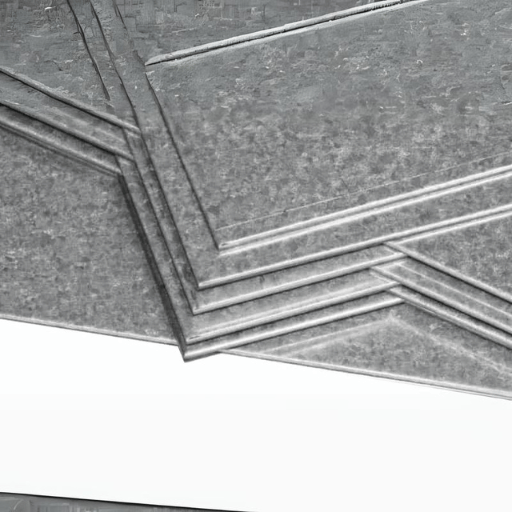
Q: What is galvannealed steel?
A: Galvannealed steel is a type of steel that has been both galvanized and annealed. This process involves coating the steel with a layer of zinc and then heating it to create a zinc-iron alloy. The result is a material that combines the corrosion resistance of galvanized steel with enhanced paintability and formability.
Q: How does galvannealed steel differ from galvanized steel?
A: The primary difference lies in the production process. While both types of steel are coated with zinc for corrosion resistance, galvannealed steel undergoes an additional annealing process, which integrates the zinc coating into the surface of the steel. This results in a zinc-iron alloy that offers better paint adherence and is easier to weld compared to galvanized steel.
Q: What are the main applications of galvannealed steel?
A: Galvannealed steel is commonly used in the automotive industry due to its excellent paintability and resistance to corrosion. It is also used in construction, appliances, and various industrial applications where a durable, corrosion-resistant material is required.
Q: Are there any limitations to using galvannealed steel?
A: While galvannealed steel offers numerous advantages, it also has some limitations. The annealing process can make the steel slightly more brittle compared to galvanized steel. Additionally, the cost of galvannealed steel can be higher due to the additional production steps involved.
Q: Can galvannealed steel be recycled?
A: Yes, galvannealed steel can be recycled. The recycling process involves melting down the steel, which separates the zinc-iron alloy from the base metal. This allows both materials to be reused, thereby contributing to environmental sustainability.







